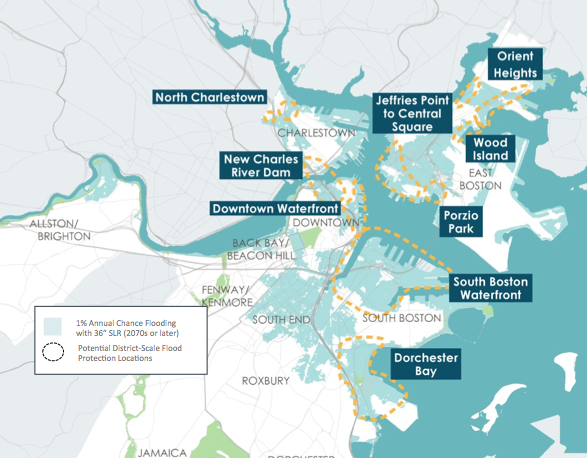With Hurricane Harvey occurring in Houston and affecting more than 30,000 people, experts say Boston could face its own flooding crisis due to climate change. Rising sea levels and increases in storm surge in particular pose a threat to the Greater Boston Area.
David Cash, Dean of the Graduate School of Policy and Global Studies at the University of Massachusetts Boston, has been one of few members of the University involved in the study of climate change in the Boston area. Currently, he and members of the UMass Boston Sustainable Solutions Lab are working with the city of Boston to study how Boston Harbor can be protected. According to Cash, “The effort that UMass Boston is taking through the Sustainable Solutions Lab is looking at how the impacts of climate change are going to be layered on already vulnerable communities and how to make those communities more resilient.”
A storm like Harvey would present major problems for the underground tunnels that run throughout Boston, the goings-on of the Massachusetts Bay Transit Authority, and would have a detrimental impact on low-income neighborhoods.
The UMass Boston School for the Environment has been engaged in studying the impacts of climate change in the Boston Area. Currently, two different projects are being worked on in order to prepare for potential catastrophic flooding. The first is studying possible governance and financial solutions, and the second is looking into the feasibility of the Harbor Sea Barrier protect.
The first project is looking into the government mechanisms that would help communities in the city and state be prepared for the impact of climate change, whatever those impacts may be. The main purpose of this project is to understand what the best options are for zoning regulations and insurance plans in the communities most likely to be affected by a major storm.
The second project looks into the feasibility of different kinds of harbor protection efforts, from both the large scale of the Harbor Barrier Project to a more local scale. The large-scale harbor-wide protection project looks into the possibility of creating three outer harbor barriers and two smaller inner harbor barriers. One of these barriers would be located along East Boston to the seaport district down to the the UMass Boston area, and the other inner barrier would be located along the coast of Quincy. The local scale protection plan would consist of many different coastal protection systems. These systems would range from a living shoreline barrier to a multi purpose levee road, or even a permanent or temporary flood wall.
Their finance and governing project is currently underway and will be done within six to eight months. As for protecting the Boston coastline, the City of Boston is currently developing a green way that will be raised into a berm along the East Boston area. The larger barrier would not be due to start until a decade from now. Little research has been done on creating these large sea barriers. Those working on the Harbor Barrier Project will continue to look into the effects of the sea barriers on the ecosystem of the harbor, the financial necessities of building the barriers, and the impacts the barriers would have on shipping and recreation in the Harbor. For the time being, if a Hurricane were to strike Boston with a force similar to Harvey, the city’s government is focused on identifying a “shovel-ready” project to protect areas that are vulnerable to storm surge.





















































